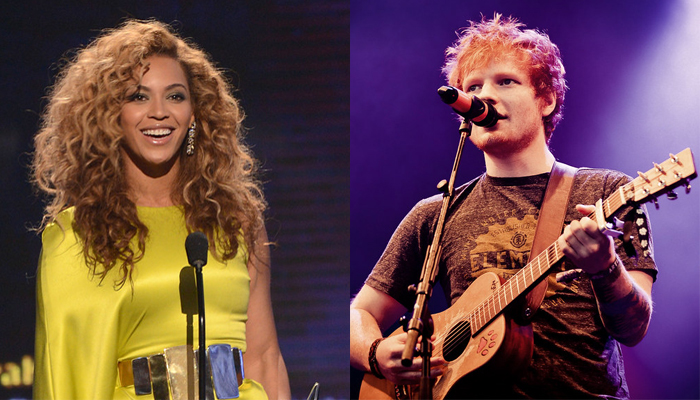Whether it’s David Bowie and Mick Jagger’s 1985 duet Dancing in the Street or Ed Sheeran’s latest No. 6 Collaborations Project – featuring Justin Bieber, Cardi B and Bruno Mars among others – partnerships between musicians have been on the creative landscape for some time.
So while it is not unusual for artists to work together on projects, in recent years there has been an increasing number of musicians collaborating to shore up their chances for success, often driven by more than a merciless cash grab.
While examining weekly US Spotify streaming data, Macquarie University research found that songs featuring guest artists attract significantly more streams.
“We observed that songs featuring other artists consistently outperform those that do not,” says Associate Professor Jordi McKenzie from the Macquarie Business School, one of the co-authors of the research.
We observed that songs featuring other artists consistently outperform those that do not.
Overall, the effect is about a 5 per cent increase in the number of streams for collaboratively written songs, and they can receive a 13 per cent bump in their first week of release before tapering off.
The study, co-authored by Dr Paul Crosby from Macquarie University’s Business School and Dr Liam Lenten from La Trobe University, also examines the number of years the artists have been active, the number of studio albums, and which artist was more popular in the lead-up to a song's release.
It’s not just about the money
Economics aside, combining different musical styles and pedigrees may simply result in a better song. For example, a pop vocalist may sing a chorus on a hip-hop song to enhance its overall appeal.
McKenzie says collaboration sometimes occurs when an artist is invited to make a contribution that the main artist feels they are unable to provide themselves.
“This could be a vocalist singing a hook that is particularly suited to their vocal range, or a rapper adding a verse to a pop song. In this respect, the collaboration produces a better song than what would have been achieved without it.”
Aerosmith's collaboration with hip-hop group Run DMC on the 1986 cover of their 1975 single Walk this Way is a well-known example.
The number of songs with a feature artist on the year-end US Billboard Hot 100 chart in the past 30 years has increased sevenfold from six songs in 1988 to 43 in 2018.
Building a bigger fan base
Beyond the financial windfall, collaborations also offer the potential to increase a fan base and for cross-promotional purposes. Think of Paul McCartney’s collaboration with Kanye West and Rihanna on FourFiveSeconds.
“The promotional forces could raise the artists’ exposure to new fans or pique the interest of existing fans,” McKenzie says.
The number of songs with a feature artist on the year-end US Billboard Hot 100 chart in the past 30 years has increased sevenfold from six songs in 1988 to 43 in 2018.
There was even a K-pop/hip-hop collaboration when US rapper Boogie Wit Da Hoodie enlisted K-pop star Park Woo Jin for a remix of Look Back at It.
The research found that songs with more popular feature artists performed better and those where a feature artist received a writing credit also generated more streams.

Perfect duet: Ed Sheeran re-recorded one of his songs from the album Divide with Beyonce.
McKenzie says the latter finding could be due to two factors: First, a writing credit suggests a more genuine collaboration, which potentially could support a 'quality' argument. Second, the relative standing of the feature artist could command a writing credit, which further supports a 'promotion' story.
Feature artists on the rise
Artists are also sharing creative credits with musical masterminds like Calvin Harris and Mark Ronson who have collaborated on songs with some of the biggest names in the business such as Adele, Bruno Mars, Miley Cyrus and Lady Gaga.
McKenzie says technology has played a big part in the increasing popularity of feature artists.
“Barriers to collaboration have decreased as a direct result of various technological advancements. The days of expensive recording sessions and logistical constraints on collaborations are long gone with artists now able to record remotely and share their work over the internet,” McKenzie says.
Technological advancement and communication through social media platforms have also led to innovative collaborations. Pop star Billie Eilish connected with British rapper Crooks over comments he left on her Instagram feed – he ended up featuring on the 17-year-old’s debut album.
Jordi McKenzie is Associate Professor at Macquarie Business School. His research interests are cultural and sports economics, and industrial organisation with a principal focus on the entertainment industries.



